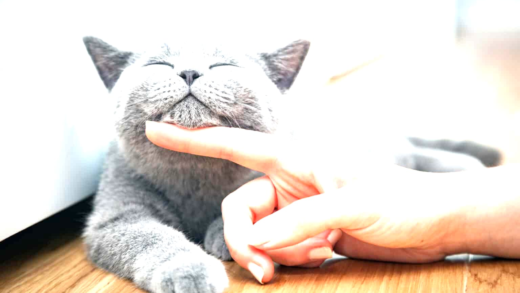Recent excavations in Pompeii have revealed insights into Roman humor through comic art. These discoveries showcase emotional expressions, the significance of crass humor, and lessons for modern society. The findings enrich our understanding of daily life and cultural practices in ancient Rome.
Recent Excavations in Pompeii: What’s New?
Recent excavations in Pompeii have unveiled a treasure trove of insights into ancient Roman life, particularly through the lens of humor and art. In 2024, archaeologists announced significant findings that include well-preserved Roman comic paintings and murals. These discoveries offer a unique glimpse into the daily lives of Pompeii’s residents and their sense of humor.
Among the most exciting revelations are the colorful comic murals found in private homes and public spaces, showcasing scenes of laughter, social interactions, and playful depictions of everyday life. Such artifacts not only enrich our understanding of Roman art but also highlight the cultural importance of humor in ancient societies.
Murals and Comic Paintings Discovered: A Closer Look
The recent excavations have revealed a variety of murals and comic paintings that stand out for their vivid imagery and engaging storytelling. These artworks often feature exaggerated expressions and scenarios that reflect the lighter side of Roman life. For example, one mural depicts a humorous scene of a dinner party gone awry, complete with spilled food and startled guests.
- Types of Scenes: Many murals illustrate comedic situations involving everyday activities, such as cooking and social gatherings.
- Character Depictions: Figures are often portrayed with exaggerated features, enhancing the comedic effect.
- Color Usage: Bright colors used in these murals help to convey emotions and create an inviting atmosphere.
These discoveries not only serve as artistic expressions but also as historical documents that provide context to the societal norms and humor of the time.
Differences Between Comic Paintings and Traditional Murals
Comic paintings differ from traditional murals in several key ways. While traditional murals often focus on grand themes such as mythology or religion, comic paintings emphasize humor and everyday life. This shift in focus allows for a more relatable and engaging artistic expression.
- Subject Matter: Comic paintings often depict humorous, light-hearted scenes, whereas traditional murals may portray serious narratives or heroic figures.
- Artistic Style: Comic art typically employs bold lines and exaggerated forms to enhance comedic elements, contrasting with the more subdued and realistic styles of traditional murals.
- Emotional Impact: The intent behind comic paintings is to evoke laughter and joy, while traditional murals aim to inspire awe or reverence.
Understanding these differences helps us appreciate the diverse artistic expressions found in ancient Roman culture, showcasing how humor was interwoven into their daily lives.
Everyday Life in Pompeii Through Comic Art
The recent Pompeii excavations provide a fascinating glimpse into daily life in Pompeii, particularly through the lens of Roman comic art. These vibrant murals reveal how Romans engaged with their environment and each other. For instance, scenes of bustling markets, family gatherings, and even mundane chores are depicted with humor and warmth. This artistic approach not only entertains but also serves as a historical record.
Examples of daily life captured in these artworks include:
- Social Gatherings: Many murals illustrate lively feasts and parties, showcasing the importance of community.
- Work and Leisure: Comic art often depicts laborers at work, alongside scenes of relaxation, providing a balanced view of Roman priorities.
- Interactions: Humorous exchanges between characters highlight social norms and relationships.
This rich artistic representation allows modern viewers to connect with the past, illustrating that humor was an integral part of everyday interactions in Pompeii.
Timeless Humor in Ancient Roman Culture
Humor in ancient Roman culture was not just a form of entertainment; it was a way to navigate social dynamics and express emotions. The excavated comic paintings reveal that Romans valued laughter and wit, as these elements were essential for bonding and communication.
Several aspects of humor in ancient Rome include:
- Social Commentary: Many comedic scenes critique societal behaviors or norms, showcasing the artist’s insight into Roman life.
- Public vs. Private Humor: Comic art can be found in both public spaces and private homes, indicating its wide acceptance across different social strata.
- Relatable Themes: Topics such as love, miscommunication, and family are common, reflecting universal human experiences.
Through these artistic expressions, we see how humor served as a tool for connection, allowing Romans to address complex topics in an approachable way.
Recurring Themes in Roman Comic Art
Roman comic art is rich with common themes that resonate with audiences even today. These themes often reflect societal values and concerns, packaged in a humorous format.
Key themes identified in the excavated comic paintings include:
- Everyday Life: Scenes of daily tasks, like cooking or shopping, are frequent, underscoring the importance of ordinary experiences.
- Relationships: Interpersonal dynamics, including love, rivalry, and friendship, are humorously portrayed, demonstrating the Romans’ understanding of human emotions.
- Mythological References: Some artworks cleverly incorporate myths, offering a humorous twist on traditional tales.
These themes not only entertain but also provide insight into the cultural fabric of ancient Rome, showing how humor was a vital aspect of life in Pompeii.
Expressions of Emotions in Roman Art: What Can We Learn?
Roman comic art provides valuable insights into how Romans expressed their emotions. Through humor and satire, artists conveyed complex feelings, making them relatable to their audiences. This approach allows us to understand not just the humor of the time, but also the emotional landscape of Roman society.
Key emotions depicted in these artworks include:
- Joy: Many scenes feature laughter and celebration, reflecting the importance of joy in daily life.
- Frustration: Comic depictions of misunderstandings or mishaps highlight common frustrations, making them universally relatable.
- Love: Romantic encounters are often portrayed humorously, demonstrating the lighter side of relationships.
Through these expressions, we see that humor served as a coping mechanism, allowing Romans to navigate their emotions in a socially acceptable way. This artistic portrayal of feelings not only entertains but also helps modern audiences connect with the emotional experiences of ancient Romans.
The Significance of Crass Humor in Ancient Times
Crass humor played a significant role in ancient Roman culture, acting as a mirror to societal norms and attitudes. This type of humor, often characterized by its bluntness and lack of refinement, served various purposes in Roman society.
Reasons for the prevalence of crass humor include:
- Social Bonding: Sharing crude jokes created camaraderie among individuals, helping to break down social barriers.
- Coping Mechanism: Laughter at life’s absurdities provided relief from the challenges of daily existence.
- Critique of Society: Crass humor often served as a vehicle for social commentary, allowing artists to address taboo subjects while entertaining their audience.
The significance of this humor lies in its timelessness; it resonates with modern audiences, showing that laughter can transcend cultural and temporal boundaries. Understanding the role of crass humor in ancient times enriches our perspective on the importance of humor in human interactions.
Lessons for Modern Society from Ancient Humor
The recent discoveries in Pompeii offer profound lessons for modern society regarding the role of humor in human life. Ancient Roman humor emphasizes several key aspects that remain relevant today.
- Humor as a Unifier: Just as in ancient Rome, humor can bridge gaps between diverse groups, fostering connections.
- Embracing Laughter: Acknowledging the absurdities of life allows us to cope with stress and adversity.
- Critical Reflection: Using humor to critique societal norms can inspire change and encourage dialogue on important issues.
By integrating these lessons into our lives, we can enhance our social interactions and build a more resilient society. Ancient Roman humor reminds us that laughter is not just an escape, but a vital part of human experience.
Contributions of Recent Discoveries to Roman History
The recent excavations in Pompeii have significantly contributed to our understanding of Roman history. These findings provide new insights into the daily lives, social structures, and cultural practices of ancient Romans.
- Revealing Daily Life: The comic murals offer a detailed view of everyday activities, from social gatherings to work life.
- Understanding Social Norms: The themes present in the artworks reflect the values and humor of the time, revealing much about Roman society.
- Connecting Art and History: These discoveries help bridge the gap between artistic expression and historical context, enriching our overall comprehension of Roman culture.
Through these excavations, we gain a clearer picture of the intricacies of Roman life, emphasizing the importance of humor as a cultural cornerstone. The findings not only illuminate the past but also inspire continued exploration and understanding of human expression through art.





Comments are closed.